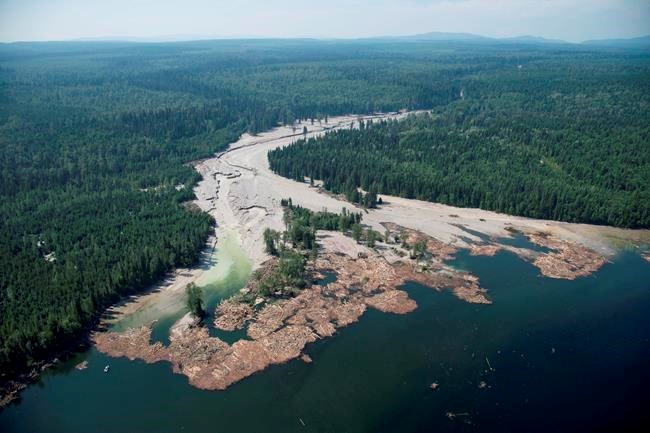The clock is counting down on the time remaining to lay environmental charges in Imperial Metals’ Mount Polley mine dam failure, which took place nearly 3½ years ago in the B.C. Interior.
One of the largest mining-dam failures in the world in the past 50 years, it shook the industry and caused concern among the public, First Nations and environmental groups that aquatic life would be harmed, particularly salmon that use the Quesnel Lake system to spawn.
The three-year deadline to lay charges under B.C.’s environmental laws passed last summer. Under federal law, there is a five-year window to lay environmental charges, leaving 20 months to do so.
The B.C. Environment Ministry said Friday that a joint investigation of the B.C. conservation officer service and federal officers continues but could not provide information on when the investigation was expected to be complete.
“B.C.’s conservation officer service will continue to work actively alongside federal agencies on this complex and thorough investigation,” environment minister spokesman David Karn said in a written statement.
“In general, the length of an investigation is dependent upon the complexity of the occurrence and the amount of information that needs to be gathered and considered. Be assured that both levels of government are committed to a thorough investigation within the timeframe of the federal statute of limitations,” said Karn.
Penalties can be far more significant under federal legislation, specifically the Fisheries Act, than under provincial legislation, noted Karn.
The federal Environment Department did not respond to a request for comment.
Mining Watch Canada spokesman Jamie Kneen said he had no insight on why it was taking so long to lay charges or whether, ultimately, charges would be laid.
“Clearly we have some concerns. We would like to see something happen,” he said.
Last year, the B.C. conservation service said the investigation that it was leading involving a dedicated team of 15 to 16 of its officers and several federal investigators — and that it had started almost immediately after the Aug. 4, 2014 dam failure.
In the environment ministry’s written response Friday, Karn said the conservation officer service does not comment on investigative staffing levels while a matter is under investigation. “Environment Minister George Heyman has recognized resource needs for the (service) and promised to provide additional conservation officers,” added Karn.
The failure of the earth-and-rock dam spilled millions of cubic metres of mine effluent and tailings, including into Quesnel Lake, and scoured nine-kilometre Hazeltine Creek where trout and coho salmon spawned.
The release included millions of cubic metres of tailings: finely-ground rock, remaining after the milling process to extract gold and copper, which contain potentially toxic metals.
Imperial Metals spent millions of dollars to rehabilitate Hazeltine Creek.
The tailings dumped into Quesnel Lake remain at the bottom of the lake.
Studies on the effect of the spill are expected to continue for years.



